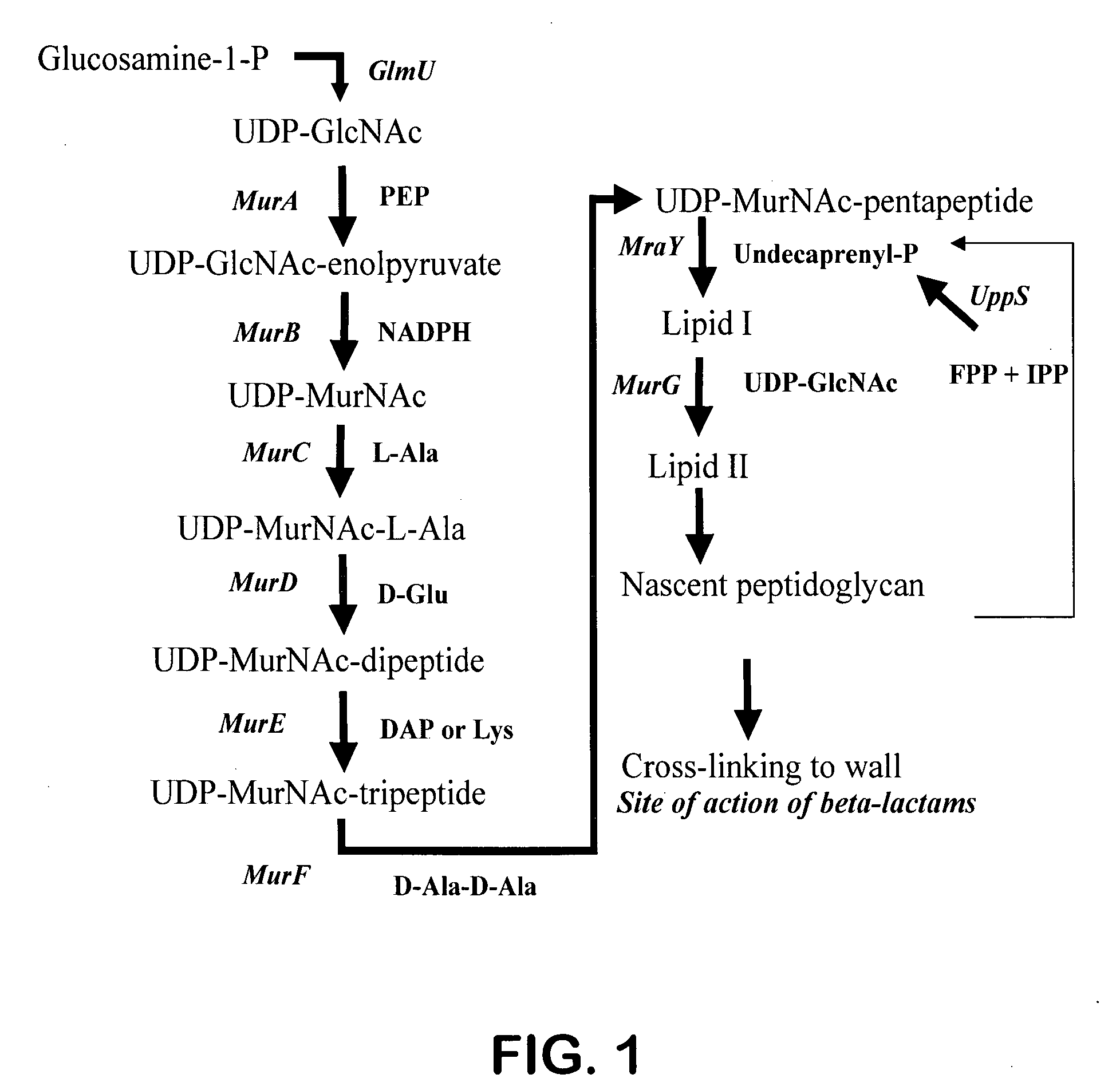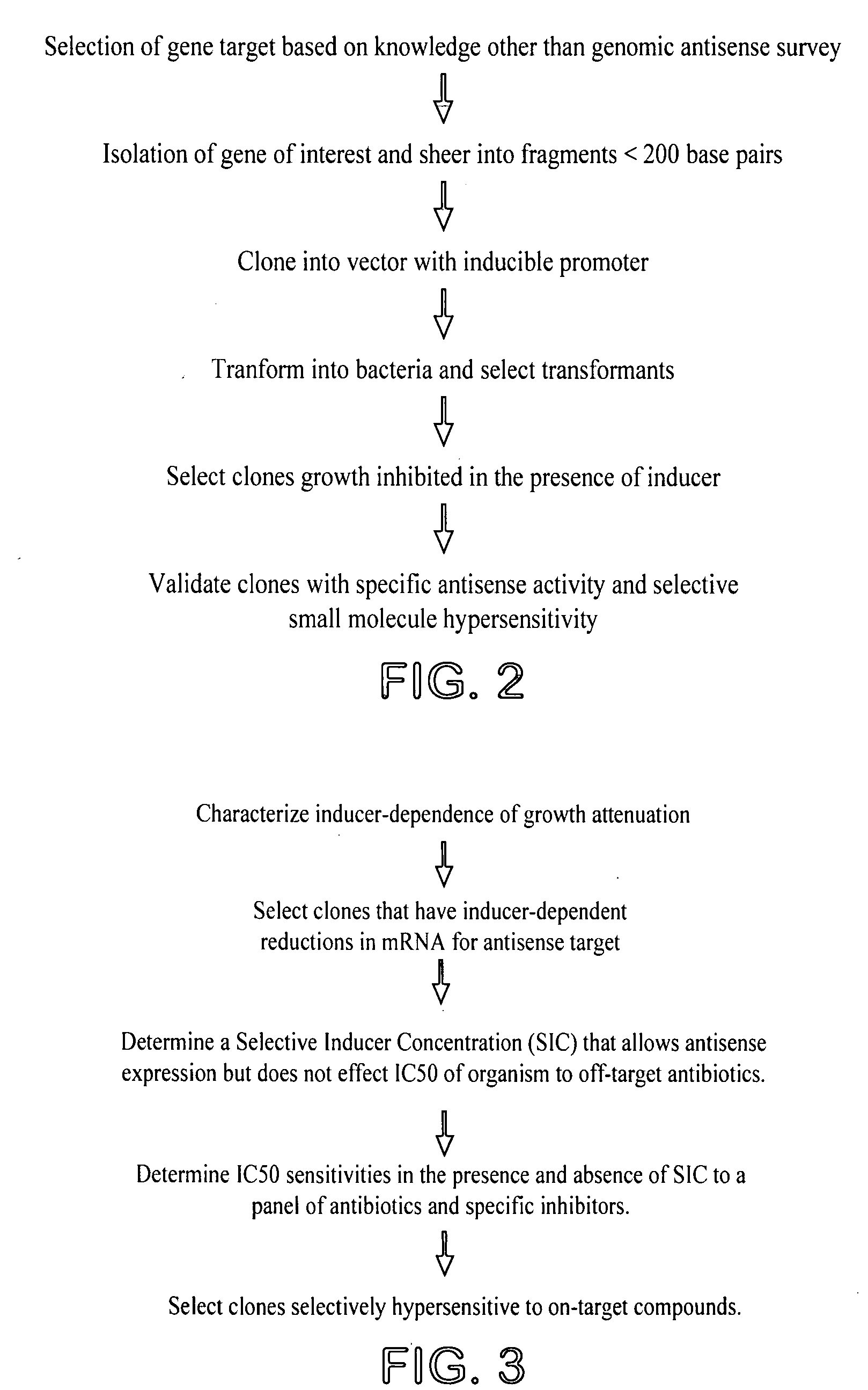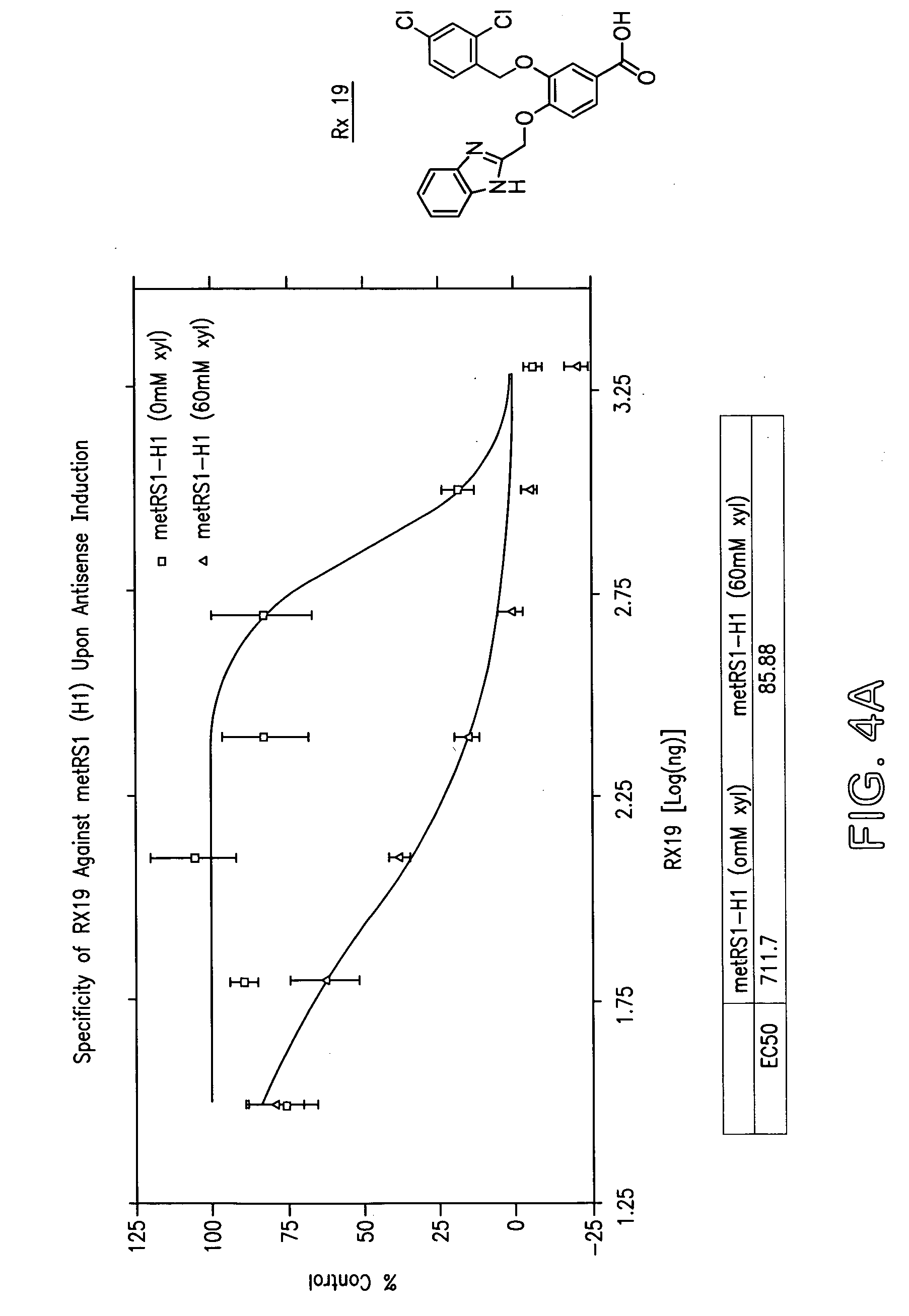Method for identifying drug-sensitizing antisense DNA fragments and use thereof
a technology of antisense dna and fragments, applied in the field of bacteria diseases, can solve the problems of antibiotic effect, constant emergence of antibiotic resistant strains of bacterial pathogens, and severely limit protein synthesis, and achieve the effect of relative sensitivity to growth inhibiting compounds
- Summary
- Abstract
- Description
- Claims
- Application Information
AI Technical Summary
Benefits of technology
Problems solved by technology
Method used
Image
Examples
example 1
[0049]A graphic map of xylose-responsive growth inhibitory fragments corresponding to the B. anthracis metRS-1 (metS) gene open reading frame (ORF). All fragments were found to be in the antisense orientation (leftward pointing arrow) relative to the corresponding gene (rightward pointing arrow). Numbers after the name of each antisense DNA fragment correspond to the span and position of the fragment relative to the gene sequence.
example 2
[0050]A graphic map of xylose-responsive growth inhibitory antisense fragments corresponding to the S. aureus metRS (metS) gene open reading frame (ORF). All fragments were found to be in the antisense orientation (leftward pointing arrow) relative to the corresponding gene (rightward pointing arrow). Numbers after the name of each antisense DNA fragment correspond to the span and position of the fragment relative to the gene sequence.
example 3
[0051]A graphic map of xylose-responsive growth inhibitory antisense fragments corresponding to the B. anthracis murB-2 gene open reading frame (ORF). All fragments were found to be in the antisense orientation (leftward pointing arrow) relative to the corresponding gene (rightward pointing arrow). Numbers after the name of each antisense DNA fragment correspond to the span and position of the fragment relative to the gene sequence.
PUM
| Property | Measurement | Unit |
|---|---|---|
| Fraction | aaaaa | aaaaa |
| Fraction | aaaaa | aaaaa |
| Fraction | aaaaa | aaaaa |
Abstract
Description
Claims
Application Information
 Login to View More
Login to View More - R&D
- Intellectual Property
- Life Sciences
- Materials
- Tech Scout
- Unparalleled Data Quality
- Higher Quality Content
- 60% Fewer Hallucinations
Browse by: Latest US Patents, China's latest patents, Technical Efficacy Thesaurus, Application Domain, Technology Topic, Popular Technical Reports.
© 2025 PatSnap. All rights reserved.Legal|Privacy policy|Modern Slavery Act Transparency Statement|Sitemap|About US| Contact US: help@patsnap.com



